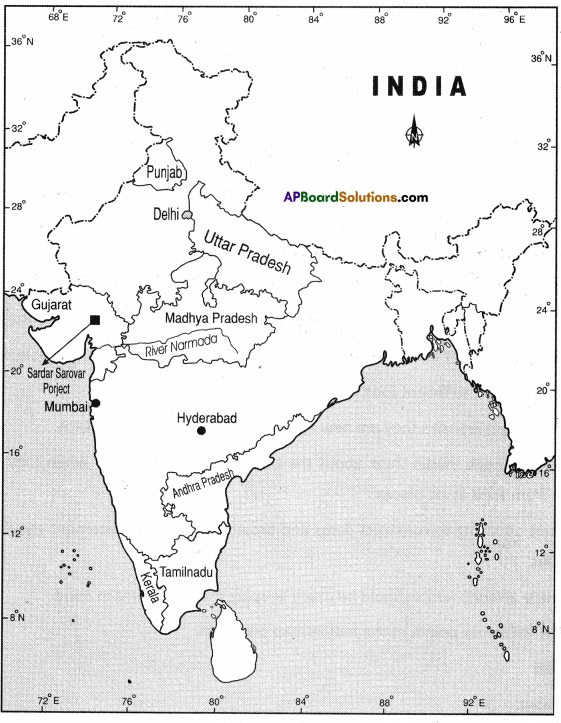These AP 10th Class Biology Important Questions and Answers 2nd Lesson Respiration will help students prepare well for the exams.
AP State Syllabus 10th Class Biology 2nd Lesson Important Questions and Answers Respiration
10th Class Biology 2nd Lesson Respiration 1 Mark Important Questions and Answers
Question 1.
What are the end products of Aerobic and Anaerobic Respirations?
Answer:
End products of aerobic respiration: Carbon dioxide, Water, Energy
End products of anaerobic respiration: Ethanol / Lactic acid, Carbon dioxide, Energy
Question 2.
In which organisms, blood does not supply the Oxygen?
Answer:
Arthropoda organisms (or) Insects (OR) Tracheal respiratory Organisms.

Question 3.
Hari said that stem also respires along with leaves. How do you support him?
Answer:
Lenticels on stem also help in gaseous exchange in some woody plants along with stomata.

Question 4.
Arrange the apparatus as above and heat the glucose. What will happen to lime water when glucose burns?
Answer:
Lime water turns milky due to carbon dioxide (CO2).
Question 5.
What is the role of mitochondria in anaerobic respiration?
Answer:
The release of energy from glucose in the presence of oxygen occurs in mitochondria. In anaerobic respiration, as oxygen is absent, mitochondria have no role in respiration.
Question 6.
Fermented idli, dosa produce smell. Name the microorganism responsible for producing such smell.
Answer:
Yeast is responsible for producing such smell in fermented idli, dosa.
Question 7.
In what compound, the energy released during the breakdown of glucose is stored?
Answer:
“ATP” (Adenosine Triphosphate).
Question 8.
Label a and b in the given diagram.

Answer:
(a) Matrix, (b) Cristae.
Question 9.
Name chemical substance produced in human muscles during Anaerobic respiration.
Answer:
Lactic acid is produced in human muscles during Anaerobic respiration.

Question 10.
Why is Diazene Green solution added to the Glucose solution in anaerobic respiration experiment?
Answer:
Diazene Green solution is added to the Glucose solution in anaerobic respiration experiment to check the presence of oxygen in glucose solution.
Question 11.
Name the food material on which trypsin acts and name the end products.
Answer:
i) protein ii) end products – peptones.
Question 12.
“Respiration is the energy releasing process.” Write your opinion on this statement.
Answer:
The given statement is absolutely correct. We respire to use the oxygen to oxidise our food and release energy. This is similar like burning but a slower process. With the help of respiratory enzymes, energy released can be stored in the form of ATP for later use.
Question 13.
Identify the figure.
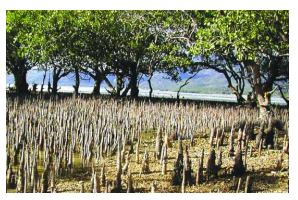
Answer:
Aerial roots in Mangrove plants.
Question 14.
Can we say that combustion and respiration are almost same actions? What evidences do you have for this?
Answer:
- In both these processes sugar is converted to carbon dioxide and water.
- Both these processes require oxygen.
- Both combustion and respiration releases energy.
Question 15.
What is the role of epiglottis in respiration and swallowing food?
Answer:
The epiglottis is a flexible flap at the superior end of the pharynx in the throat. Epiglot¬tis acts as a lid over glottis and prevents food from entering into larynx. Air from pharynx enters the larynx while food enters into oesophagus.
Question 16.
What is the function of haemoglobin?
Answer:
During respiration haemoglobin carries oxygen to the cells and CO, from cells to lungs.
Question 17.
What is respiration?
Answer:
Respiration is the process by which food is broken down to release energy.
Question 18.
What does the word respiration mean in Latin?
Answer:
In Latin the word respiration means “to breathe”.
Question 19.
Who did comprehensive work on properties of gases, their exchange and respiration?
Answer:
Lavoisier and Priestly.
Question 20.
What was the gas liberated on heating powdered charcoal in a bell jar?
Answer:
It was fixed air. In those days carbon dioxide was known as fixed air.
Question 21.
What is oxygen debt?
Answer:
It is the inadequate supply of oxygen when we undertake strenuous exercise.
Question 22.
What is vitiated air?
Answer:
It is the term used then to show air from which the component needed for burning had been removed.
Question 23.
What is the total lung capacity of human being?
Answer:
The total lung capacity of human being is nearly 5800 ml.
Question 24.
Who was the renowned chemist who wrote a textbook of Human Physiology?
Answer:
John Daper was the renowned chemist who wrote a textbook of Human Physiology.
Question 25.
What happens when air passes through nasal cavities?
Answer:
- Air is filtered in nasal cavity by mucus lining and the hairs growing from its sides, remove some of the tiny particles of dirt in the air.
- The temperature of the air is brought close to that of the body.
Question 26.
What is the function of epiglottis?
Answer:
Epiglottis controls the movement of air and food towards their respective passages.
Question 27.
What is breathing?
Answer:
- Breathing is the process of inhaling and exhaling.
- The mechanism by which organisms obtain oxygen from the environment and release CO2 is called breathing.

Question 28.
What are pleura?
Answer:
Pleura are the two membranes that protect lungs from injury.
Question 29.
What is the concentration of oxygen at a height of 13 km from the sea level?
Answer:
At a height of 13 km above sea level the concentration of oxygen is much lower about one-fifth as great as at sea level.
Question 30.
What is cellular respiration?
Answer:
Oxidation of glucose or fatty acids takes place in the cells releasing energy. Hence this process is known as cellular respiration.
Question 31.
Where does aerobic respiration occur in eukaryotic cells?
Answer:
Aerobic respiration occur in cytoplasm and mitochondria of eukaryotic cells.
Question 32.
What is Glycolysis?
Answer:
It is the first stage of respiration. In this breakdown of glucose molecule into two molecules of 3 carbon compound called pyruvic acid or pyruvate releasing energy.
Question 33.
What is the fate of pyruvate in the absence of oxygen in animals?
Answer:
In the absence of oxygen pyruvate will be converted to lactic acid and release small amount of energy in animals.
Question 34.
In which type of respiration pyruvate is converted into carbon dioxide and water?
Answer:
In aerobic respiration pyruvate is converted into carbon dioxide and water.
Question 35.
What is the main reason for feeling pain in muscles after strenuous exercise?
Answer:
Due to the anaerobic respiration in muscles large amounts of lactic acid is accumulated and this results in muscular pains.
Question 36.
What is fermentation?
Answer:
In the absence of oxygen, yeast cells convert pyruvic acid to ethanol. This process is called fermentation.
Question 37.
What is the method used to separate ethanol from the yeast glucose mixture in anaerobic respiration?
Answer:
The method used to separate ethanol from the yeast glucose mixture in anaerobic respiration is fractional distillation.
Question 38.
In which organisms does exchange of gases take place through diffusion?
Answer:
In Amoeba, hydra and planarians exchange of gases takes place through diffusion.
Question 39.
In tracheal respiratory system which carry air directly to the cells in the tissues?
Answer:
Trachioles, the fine branches of trachea carry air directly to the cells in the tissues.

Question 40.
What are the respiratory organs in fishes?
Answer:
Gills or bronchiae are the respiratory organs in fishes.
Question 41.
What is cutaneous respiration?
Answer:
If the respiration occurs through skin, it is known as cutaneous respiration, e.g : Leech, Earthworm and Frog.
Question 42.
What are the other areas on the plant body through which gaseous exchange take place?
Answer:
The areas on the plant body through which geseous exchange take place are the surface of roots, lenticels on the stem.
Question 43.
What is the full form of ATP? How is it formed?
Answer:
I) ATP stands for Adenosine triphosphate.
2) ATP is used to supply energy in the cells for the carrying all the metabolic processes.
Question 44.
What are the factors that control respiration?
Answer:
Oxygen and temperature are the two important factors that control the process of respiration.
Question 45.
What are the substances that are used for the production of energy in all living organisms?
Answer:
Glucose and fatty acids are used for the production of energy in all living organisms.
Question 46.
How many types of respiration are present? What are they?
Answer:
There are two types of respiration. They are :
- Aerobic respiration and
- Anaerobic respiration.
Question 47.
Where is energy stored in ATP?
Answer:
Energy is stored in the terminal phosphate bond in ATP which is having three phosphates attached to a molecule of Adenosine.
Question 48.
What are the power houses of the cell?
Answer:
Mitochondria are the power houses of the cell.
Question 49.
What is the main difference between respiration and combustion?
Answer:
In respiration several intermediates are produced and in combustion, there are no such intermediates are produced.
Question 50.
What is the equation that represents respiration?
Answer:
The equation that represents respiration is

Question 51.
.
What are the sites of cellular respiration?
Answer:
Mitochondria are the sites of cellular respiration.
Question 52.
What are cristae in mitochondria?
Answer:
The inner membrane of mitochondria is thrown into several folds called cristae.
Question 53.
What is the net gain of ATP molecules in Glycolysis?
Answer:
- Four ATP molecules are produced when one molecule of glucose is converted to two molecules of pyruvate but two are consumed.
- The remaining two ATP molecules are net gain in glycolysis.

Question 54.
How many ATP molecules are produced when one glucose molecule is completely oxidised?
Answer:
A net gain of 38 ATP molecules are formed from the total oxidation of one glucose molecule.
Question 55.
What are the three stages present in complete oxidation of glucose molecule?
Answer:
The three stages present in complete oxidation of glucose molecule are
- Glycolysis
- Kreb’s cycle and
- Electron transport.
Question 56.
Why does oxidation of fatty acids give more energy?
Answer:
Oxidation of fatty acids give more energy due to the presence of more carbon atoms in them.
Question 57.
What are aquatic and terrestrial animals?
Answer:
Animals that live in water are called aquatic animals and that live on land are known as terrestrial animals.
Question 58.
Why is the rate of breathing in aquatic organisms much faster than terrestrial organisms?
Answer:
- The amount of oxygen dissolved in water is low when compared to the amount of oxygen present in air.
- Therefore the rate of breathing in aquatic animals is much faster than in terrestrial animals.
Question 59.
Which part of the roots is involved in the exchange of respiratory gases?
Answer:
The part of roots that are involved in the exchange of respiratory gases are root hairs.
Question 60.
What is the average breathing rate in an adult mem at rest?
Answer:
The average breathing rate in an adult man at rest is about 15 to 18 times per minute.
Question 61.
Why is the trachea prevented from collapsing?
Answer:
The walls of the trachea are supported by several ‘C’ shaped cartillagenous rings. They prevent the trachea from collapsing and closing.
Question 62.
Why deos the percentage of carbon dioxide increase in exhaled air?
Answer:
During oxidation of glucose carbon dioxide is produced as waste product. Hence the concentration of carbon dioxide increases in exhaled air.
Question 63.
How does breathing take place in mangrove plants?
Answer:
In mangrove plants breathing takes place through specialised structures called breath¬ing roots or pneumatophores.

Question 64.
How does respiration take place in plants where roots are present in wet places?
Answer:
The plants which have their roots in very wet places have much larger air spaces, connect the stems with the roots, making diffusion from upper parts.
Question 65.
Which form a continuous network all over the plant?
Answer:
The stomatal openings lead to a series of spaces between the cells inside the plant which form a continuous network all over the plant.
Question 66.
What are the reasons for the animals to develop different types of respiratory organs?
Answer:
Body size, availability of water, habitat in which they live and the type of circulatory system are some of the reasons for the animals to develop different types of respiratory organs.
Question 67.
Why do fishes die when taken out of water?
Answer:
Fishes do not have lungs to utilise oxygen for breathing. They have gills which can utilize only dissolved oxygen from water.
Question 68.
What would be the consequences of deficiency of haemoglobin in our bodies?
Answer:
Deficiency of haemoglobin in blood can affect the oxygen supplying capacity of blood to body cells. It can also lead to a disease called Anaemia.
Question 69.
What are the stages of respiration in man?
Answer:
Respiration in man occurs in two stages 1) Inhalation (or) Inspiration 2) Exhalation (or) Expiration.
Question 70.
Which part plays major role in respiration of man?
Answer:
Diaphragm plays a major role in respiration in man.
Question 71.
Which part plays major role in respiration of woman?
Answer:
In woman ribs play a major role in respiration.
Question 72.
How are lungs protected?
Answer:
Lungs are protected by two membranes called pleura. A fluid between these membranes protects the lungs from injury.
Question 73.
What is the composition of exhaled air?
Answer:
Exhaled air contains 16% of oxygen, 4% of carbon dioxide and 79% of nitrogen.
Question 74.
Why are red blood cells red in colour?
Answer:
Red blood cells are red in colour due to the presence of haemoglobin in their cytoplasm.

Question 75.
How is haemoglobin made up of?
Answer:
Haemoglobin is made up of a protein called globin, Iron (Hearn) and organic molecule called porphyrin.
10th Class Biology 2nd Lesson Respiration 2 Marks Important Questions and Answers
Question 1.
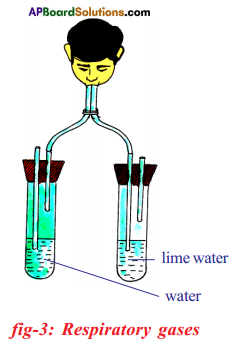 (a) Which gas turns lime water milky in this experiment?
(a) Which gas turns lime water milky in this experiment?
Answer:
Carbondioxide (or) CO2
(b) Which gas do you think might be present in less quantities in the air we breath out as compared to air around us?
Answer:
Oxygen (or) O2
Question 2.
Balu said that, “Plants perform Photosynthesis during day time. They respire during night time”.
Do you agree with Bain? Why? Why not?
Answer:
- I do not agree with Balu’s statement.
- Photosynthesis depends on light for energy but respiration does not depend on light.
- Hence, photosynthesis takes place during day time only whereas respiration takes place both day and night.
Question 3.
The sportsman who participated in 100 mtr race get more muscle pains. But the sportsman who participates in 5 km’s race get less muscle pains. What is the reason?
Answer:
- Accumulation of lactic acid results in muscular pain.
- During 100 m race a well trained athlete can hold his breath and afterwards he pants.
- In this case, the muscles are using energy released during the anaerobic break down of glucose, lactic acid is produced.
- The presence of lactic acid in the blood is the main cause of muscle fatigue. Whether it is 100 mtr race or 5 km race.
- If the body is rested long enough the tiredness goes.
Question 4.
What happens if there is no epiglottis in human beings?
Answer:
- Food may enters into the larynx.
- Food may enters into the lungs leading to the death.
- May not speak properly.
- Entry of food and air may not be regulated properly.

Question 5.
Write two chemicals and two materials required to conduct the experiment “Heat and Carbon dioxide are evolved during anaerobic respiration”.
Materials required: Thermosflask, splitted corks, thermometer, wash bottle, glass tubes.
Chemicals required: Liquid paraffin, glucose solution, bicarbonate solution, Janus green B and Yeast cells.
Question 6.
Observe the below diagram.
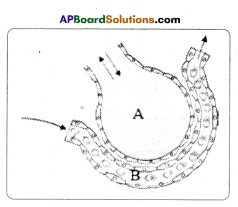 A) To which biosystem is this picture related?
A) To which biosystem is this picture related?
Answer:
Respiratory system.
B) Write the names of the parts of A, B.
Answer:
A – alveolus; B – blood capillary network
C) To which system are they linked with?
Answer:
Respiratory system; circulatory system.
D) Which process is happening here? What happens as a result of it?
Answer:
Gaseous exchange between alveolus of lungs and blood capillaries. Due to this the CO2, present in blood capillaries enter alveolus and oxygen present in alveolus en¬ter blood capillaries.
Question 7.
A person reached a specific distance once on foot and once by running. In which situation his legs pain? Why?
Answer:
- When a person runs to reach a specific distance gets pain in his legs.
- This is due to the production of lactic acid in the muscles.
- Due to the Anaerobic respiration glucose in muscles converts into lactic Acid.
- Accumulation of lactic acid causes pain in leg muscles.
Question 8.
What is the advantage of the wet and warm passage of air from the nostrils to capillaries?
Answer:
When the air passes in nasal cavity and in the pharynx some changes take place.
- The mucus layer and hair in the nasal cavity removes the dust particles in the air.
- The temperature of the air brought to the body temperature.
- Moistening the air.
Question 9.
In the experiment of anaerobic respiration with yeast
i) Why was liquid paraffin poured on glucose?
ii) What did you understood about anaerobic respiration?
Answer:
i) The supply of oxygen from the air can be stopped by pouring liquid paraffin on glucose.
ii) Anaerobic respiration takes place in the absence of oxygen. In this glucose molecule is incompletely oxidised. The end products of anaerobic respiration are ethyl alcohol or lactic acid and CO2.
During anaerobic respiration small amount of energy is liberated (2ATP). Anaero¬bic respiration occurs in many anaerobic bacteria and human muscles cells. The anaero¬bic respiration can be represented as:
C6H12O6 → 2C2H5OH + 2CO2+ 56 K.Cal.
Question 10.
See the below table. Write what you know from it.
| Gas |
% in inhaled air |
% of exhaled air |
| Oxygen |
21 |
16 |
| Carbon dioxide |
0.04 |
4 |
| Nitrogen |
79 |
79 |
Answer:
- The inhaled air consists of 21% of oxygen whereas the exhaled air contains 16% of oxygen only. This is due to utlilisation of oxygen during cellular respiration in the body. Hence the difference occurs.
- Inhaled air contains 0.04% of carbondioxide whereas exhale air contains 4% of carbondioxide.
The concentration of CO2 is increased a lot due to the release of CO2 during cellular respiration in the body.
- Both inhale and exhale air contains 79% of nitrogen because nitrogen has no role to play in cellular respiration.

Question 11.
What is the pathway of air from nostril to alveolus?
Answer:
Draw a flow chart of Respiratory passage of Humans.

Question 12.
What happens when a baker prepares a dough by mixing yeast in it?
Answer:
- The yeast is commonly used for fermenting bread is saccharomyces cerevisiae.
- Baker’s yeast has the advantage of producing uniform, quick, and reliable results because it is obtained from pure culture.
- Water is mixed with flour, salt and the fermenting agent.
- The mixed dough is then allowed to rise one or more times.
- Then loaves are formed and the bread is baked in air oven.
Question 13.
How does respiration in amoeba and hydra occur through diffusion? (OR)
What are the similarities in respiration of amoeba and hydra?
Answer:
- Amoeba and hydra are aquatic organisms.
- Respiration in them occurs through diffusion.
- As oxygen is used by these organisms in respiration, its concentration is reduced in cytoplasm. Hence oxygen diffuses into cytoplasm from surrounding water.
- During respiration CO2 is continuously produced, its concentration increases in the cytoplasm, hence it diffuses into surrounding water.
Question 14.
Write a short note on ATP. (OR) Expand ATP.
Answer:
- From the break down of glucose the energy is released and stored up in a special compound known as ATP (Adenosine Triphosphate).
- It is a small parcel of chemical energy. The energy currency of these cells is ATP an energy rich compound that is capable of supplying energy whenever needed within the cell.
- Each ATP molecule gives 7200 calories of energy. This energy is stored in the form of phosphate bonds.
- If the bond is broken, the stored energy is released.
Question 15.
How do Dolphin and Crocodile respire?
Answer:
- The aquatic animals like dolphin and crocodile respire with the help of lungs.
- They come out of the water for air.
- These two animals were lived on land initially.
- Later they lived in water and developed several adaptations to live in water.
Question 16.
Why are Mitochondria called “Power houses of cell”? (QR)
What is the energy producing organ in a cell? How does it produce energy?
Answer:
- Cellular respiration in prokaryotic cells like that of bacteria occurs within the cytoplasm.
- In eukaryotic cells cytoplasm and mitochondria are the sites of reaction.
- The produced energy is stored in mitochandria in the form of ATP.
- Hence, mitochondria are called “Power houses of cell”.

Question 17.
Write the rate of respiration in different age groups of human beings.
Answer:
- Newborn child: 32 times per minute
- Children of 5 years: 26 times per minute
- Man of 25 years: 15 times per minute
- Man of 50 years: 18 times per minute
10th Class Biology 2nd Lesson Respiration 4 Marks Important Questions and Answers
Question 1.
Write about respiration in mangroves that grow in marshy lands.
Answer:
- Mangroves grown near the marshy places respire through aerial roots or respiratory roots.
- The root hairs exchange the gases from their surface.
- They obtain oxygen from the airspaces present between the soil particles.
- The plants grown in marshy places are adapted to develop aerial roots above the soil surface which helps in gaseous exchange.
Question 2.
 a) What is the aim of this experiment?
a) What is the aim of this experiment?
Answer:
Heat is liberated during respiration.
b) What change do you observe in thermometer readings?
Answer:
Reading increases in the thermometer.
c) In your opinion, where did this heat come from?
Answer:
The heat comes from the germinating seeds which respire and releasing heat.
d) What precaution should we take, while doing this experiment?
Answer:
The bulb of the thermometer should be dip in the germinating seeds (or) sprouts.
Question 3.
You have conducted this experiment in your classroom. Now answer the following questions.
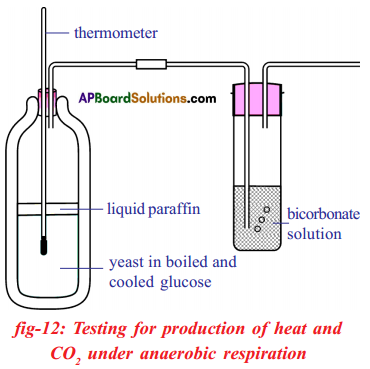 a) What do you prove by conducting this experiment?
a) What do you prove by conducting this experiment?
Answer:
To test the production of heat and carbon dioxide during anaerobic respiration.
b) Why do you heat glucose solution?
Answer:
To remove the dissolved oxygen in the glucose solution.
c) How do you confirm that glucose solution is free from oxygen after heating it?
Answer:
By adding diazine green (Janus green B) solution to glucose solution, it turns to pink.
d) What are the changes you notice in the lime water?
Answer:
Lime water turns milky white.

Question 4.
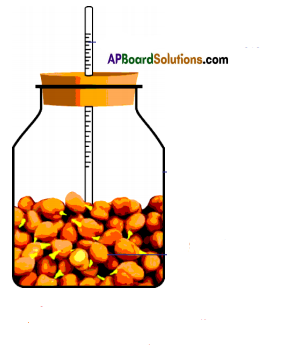
i) What change did you observe in the thermometer in the given experiment?
Answer:
Raise in the temperature
ii) Where does the heat come from?
Answer:
From the germinating seeds during respiration
iii) What result you will get, if you perform this experiment with dry seeds?
Answer:
No change of temperature in thermometre.
iv) What are the apparatus used in this experiment?
Answer:
Glass jar, germinating seeds, cork, thermometer.

Question 5.
Observe the set of apparatus and answer the following questions.
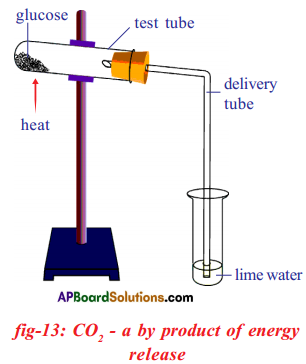 i) Which process do we know with the help of this experiment?
i) Which process do we know with the help of this experiment?
Answer:
Combustion.
ii) How does this process differ with respiration?
Answer:
Respiration occurs in the presence of water.
Combustion occurs in the absence of water.
iii) What are the similarities between this process and respiration?
Answer:
In both processes energy is released.
iv) Which gas turns lime – water milky?
Answer:
Carbon-di-oxide (CO2)
Question 6.
Look at the following experiment. Answer the questions.

a) What is the aim of the experiment?
Answer:
The aim of the experiment is CO2 is released during anaerobic respiration.
b) Which agent is used to find the presence of oxygen?
What changes do you observe when oxygen is present in Glucose solution?
Answer:
To find the presence of oxygen diazine green (Janus Green B) solution is used. The blue diazine green solution turns pink when oxygen is present in the glucose solution.
c) Why is liquid paraffin poured on glucose solution?
Answer:
By pouring liquid paraffin on glucose solution, the supply of oxygen from the air can be cut off.
d) Which gas is released during the experiment? How can you prove it?
Answer:
Carbon dioxide is released.
The released CO2 passes into lime water it turns milky.

Question 7.
Observe the following diagram and answer the following questions.
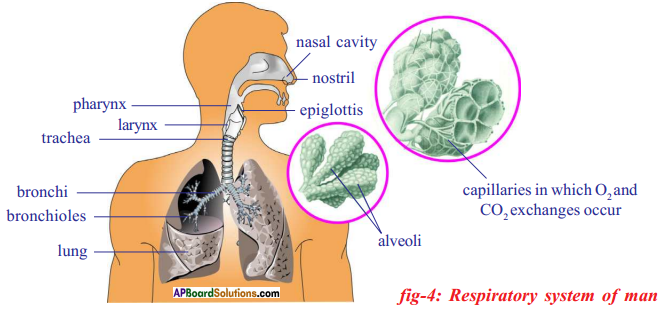
- What do we call the membranes that cover the lungs?
- What is the functional unit of lungs ?
- Which part produces the sound ?
- What does ‘X’ denote ?
Answer:
- Pleura
- Alveoli
- Larynx
- Trachea
Question 8.
Observe the diagram and answer the following questions.

a) What does the given diagram indicate?
b) What is the part ‘X’ in the diagram?
c) What is the function of the given picture?
d) To which system the given picture belongs to?
Answer:
a) The given diagram indicates mitochondria.
b) Matrix
c) Performing cellular respiration and releasing energy in the form of ATP.
d) Respiratory system.
Question 9.
Observe the experimental setup and answer the given questions.
 A) What is the aim of this experiment?
A) What is the aim of this experiment?
B) What are the apparatus required for this experiment?
C) What changes do you observe in thermometer during this WKm experiment?
D) What will happen, if dry seeds are taken instead of germinating seeds in this experiment?
Answer:
A) Heat is liberated during respiration.
B) Glass jar, Germinating seeds, Cork and Thermometer.
C) We can notice the raise in temperature after observing the thermometer readings.
D) There will be no change of temperature in the thermometer. We can’t prove the aim of the experiment.
Question 10.
Observe the below diagram and answer the following questions:
 i) What does the above setting (diagram) indicate?
i) What does the above setting (diagram) indicate?
Answer:
The above setting (diagram) indicates to prove that carbon dioxide and heat are liberated during anaerobic respiration by yeast cells.
ii) Why is boiled and cooled glucose covered with paraffin?
Answer:
To prevent supply of air, boiled and cooled glucose is covered with paraffin.
iii) What is the use of adding diazine green to glucose solution? What change you notice in glucose solution?
Answer:
Diazine green is added to glucose solution to know whether oxygen is present or not in glucose solution. When the availability of oxygen is less the diazine green changes to pink colour.
iv) Why is lime water used in this experiment?
Answer:
To know whether carbon dioxide is released or not in this experiment lime water is used. Carbon dioxide changes lime water to milky white.
v) Why is bulb of thermometer dipped in the glucose water?
Answer:
To know the rise in temperature of glucose solution when heated, the bulb of thermometer is dipped in the glucose water.

Question 11.
Explain with the help of a flow chart, the path way of air in humans.
Answer:
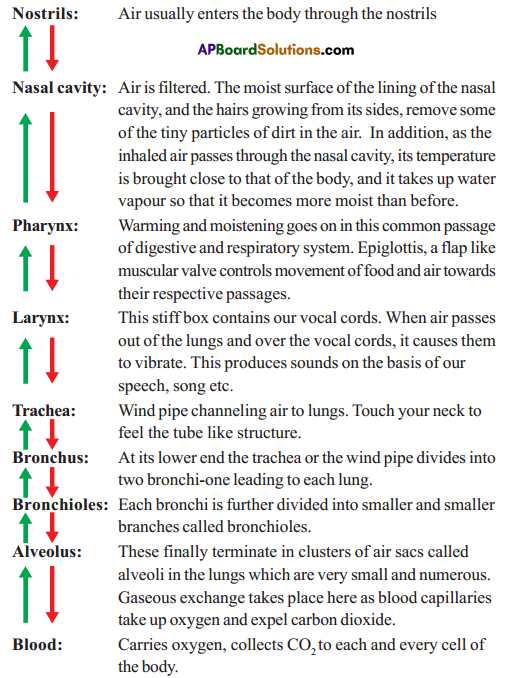
Question 12.
Study the graph and answer the following questions :
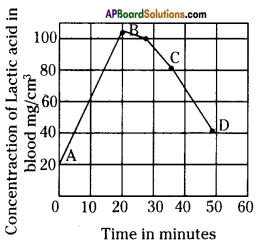 Graph showing effects of vigorous excercise on the concentration of lactic acid in blood.
Graph showing effects of vigorous excercise on the concentration of lactic acid in blood.
i) What was the concentration of lactic acid in blood to start with?
ii) What was the greatest concentration of lactic acid reached during the experiment?
iii) What is the concentration of lactic acid after 25 minutes of exercise?
iv) What is the relationship between lactic acid and muscle pain?
Answer:
i) 20 mg/cm3
ii) 20 minutes (Or) at “B” point,
iii) 101 mg/cm3
iv) If concentration of lactic acid increases, muscle pains also increases.
Question 13.
Observe the following :
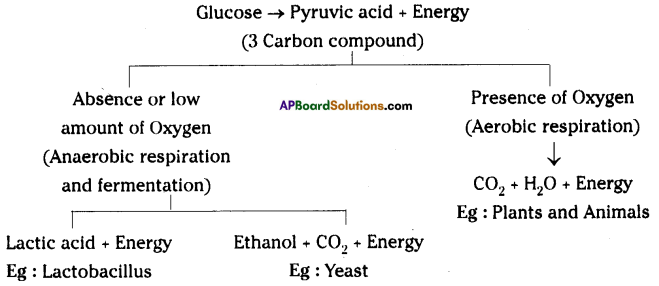
Write the answers to the following questions:
i) How many Pyruvic acid molecules form from one Glucose?
Answer:
2 Pyruvic acid molecules.
ii) What conditions influence Pyruvic acid to participate in Aerobic and Anaerobic respiration?
Answer:
Presence of oxygen
iii) In which we get more energy in both Aerobic and Anaerobic respirations?
Answer:
Aerobic respiration
iv) The chemical that is formed in human muscles during Anaerobic respiration.
Answer:
Lactic acid
Question 14.
Why does the exchange of gases happen only in alveoli, though arteries are present in pharynx, trachea and bronchus?
Answer:
- Alveoli are tiny air sacs in the lungs surrounded by capillaries
- They are numerous and only single cell thickness
- They increase the efficiency of gas exchange.
- Due to the difference in a gradient of O2 oxygen diffuse from alveoli to blood capillaries.
Question 15.
What are the events or steps in respiration?
Answer:
The following are the events or steps in respiration.
- Breathing: Air moves into lungs and out of lungs.
- Gaseous exchange in lungs: Exchange of gases between alveoli and blood.
- Gas transport by blood: Transport of oxygen from blood capillaries of alveoli to body cells and return of carbon dioxide.
- Gaseous exchange in cells: Exchanging oxygen from blood into the cells and carbon dioxide from cells into the blood.
- Cellular respiration: Using oxygen in cell processes to produce carbon dioxide and water, releasing energy to be used for life processes.

Question 16.
What will happen if the respiratory tract is not moist? (OR)
Why respiratory tract should be moist?
Answer:
- If the respiratory tract is not moist the dirt particles in the inhaled air will not be removed from air in the nasal cavities and reaches lungs and creates problems to lungs.
- The temperature of the inhaled air is brought close to that of the body for the smooth passage in the respiratory tract. If it is dry, it is not possible.
- If the surface dries out, gas exchange will happen at a very reduced rate since fast moving gaseous oxygen molecules do not efficiently cross the alveoli membrane.
- The reduced gas exchange is most likely not enough to support blood oxygenation for vital functions.
- Hence respiratory tract should be moist for smooth exchange of gases.
Question 17.
Explain the process of transportation of gases through the blood.
Answer:
- The relative amount of gases and their combining capacity with haemoglobin and other substances in blood determine their transport via blood in the body.
- When oxygen present in the air is within normal limits (around 21%) then almost all of it is carried in the blood by binding to haemoglobin, a protein present in the red blood cells.
- As oxygen is diffused in the blood, it rapidly combines with the haemoglobin to form oxyhaemoglobin.
- Not only can haemoglobin combine with oxygen, but it can easily broken into haemoglobin and oxygen.
- Carbon dioxide is usually transported as bicarbonate, while some amount of it combines with haemoglobin and rest is dissolved in blood plasma.

Question 18.
Why is human life impossible at higher altitudes without a supplementary supply of oxygen? (OR)
The concentration of oxygen in air decreases as we go up from sea level. Explain briefly.
Answer:
- If haemoglobin is exposed to air at sea level, every molecule in air combines with oxygen to form oxyhaemoglobin.
- At a height of 13 km above sea level, the concentration of oxygen is much lower about l/5th of a sea level.
- Under these conditions about half as many molecules of oxygen combine with haemoglobin to form oxyhaemoglobin.
- Blood cannot carry enough oxygen to the tissues.
- Hence human life is impossible at such a high altitude without a supplementary supply of oxygen.
- Provision for such a supply is built into modern aircraft which have pressurized cabins that maintain an enriched air supply.
Question 19.
What are the different ways in which glucose is oxidised to provide energy in various organisms? Give one example of each.
How does oxidation of glucose occur in various organisms?
Answer:
- Glucose is the most commonly used sugar for deriving energy in plants, animals and in microorganisms.
- In all these organisms glucose is oxidized in two stages.
- The first stage is known as Glycolysis. It occurs in cytoplasm.
- During glycolysis glucose is converted to two molecules of pyruvic acid.
- In the second stage if oxygen is available pyruvic acid is converted to C02 and water, large amount of energy is released. This is known as aerobic respiration. It occurs in most of the plant and animal cells.
- If oxygen is inadequate or not available, pyruvic acid is converted into ethanol and carbon dioxide. This is anaerobic respiration taking place in yeast cells that is called fermentation.
- If oxygen is not available in muscle cells, the pyruvic acid is converted into lactic acid.


Question 20.
Write the adaptations seen in plants living in water logged conditions.
(OR)
What are the adaptations seen in magrove plants?
Answer:
- Most plants can aerate their roots by taking in the oxygen through lenticels or through the surface of their root hairs.
- But plants which have their roots in very wet places, are unable to do this.
- They are adapted to these water logged conditions by having much larger air spaces which connect the stems with the roots, making diffusion from the upper parts much more efficiently.
- The problem of air transportion is more difficult for trees and may not survive with their roots permanently in water.
- To overcome this problem the mangrove tree of the tropics which raise up aerial roots above the surface and takes in oxygen.
Question 21.
Describe the mechanism of branchial or gill respiration in fishes.
(OR)
Briefly explain the process of exchange of gases in fishes during respiration.
Answer:
- Some aquatic animals like fishes have developed special organs for respiration which are known as gills or branchiae.
- Blood is supplied to gills through capillaries which have thin walls where gases are exchanged. Gills are present in the gill pouches or branchial pouches.

- Gills are provided with leaf-like folds called gill lamellae.
- Fish keeps its mouth open and lowers the floor of the oral cavity. As a result water from outside will be drawn into the oral cavity.
- Now the mouth is closed and the floor of the oral cavity is raised.
- Water is pushed into the pharynx and is forced to gill pouches through internal branchia apertures.
- When water passes through gill lamellae exchange of gases takes place, that is oxygen diffuses from water to blood and CO2 from blood into water.
- Then water flows through external branchia aperture.
Question 22.
Explain briefly about Pranayama- the art of breathing. (OR)
How can the capacity of lungs be improved by yoga?
Answer:
- To improve breathing capacity the saint Patanjali developed Yogabyasa.
- The art of breathing in Yogabyasa is called Pranayama. Prana means gas, ayama means journey.
- In Pranayama practice air is allowed to enter three lobes of lungs in order to in¬crease the amount of oxygen to diffuse into blood.
- More amount of oxygen available to brain and tissues the body will be more active.
- It is very important to practise Pranayama regularly to make our life healthy and active.
- All people irrespective of age and sex should practise Pranayama under the guidance of well trained Yoga Teacher to improve the working capacity of lungs.
Question 23.
What are the experiments carried out by Lavoisier to understand the property of gases?
Answer:
- In his early experiments Lavoisier thought that the gas liberated on heating powdered charcoal in a bell jar kept over water in a trough was like fixed air i.e., carbon dioxide.
- The next series of experiments deals with the combustion of phosphorous in a bell jar. From this he showed that whatever it was in the atmospheric air which combined with the phosphorous was not water vapour.
- This was respirable air, a component of air that also helped in burning.
- The air that we breathe out precipitated lime water while that after heating metal did not.
- From this, he concluded that there were two processes involved in respiration.
- Lavoisier carried out another experiment by which he showed that about one sixth of the volume of ‘vitiated air’ consists of chalky acid gas (fixed air).
- Either eminently respirable air is changed in the lungs to chalky acid air; or an exchange takes place, the eminently respirable air being absorbed, and an almost equal volume of chalky acid air being given up to the air from the lungs.
- Lavoisier had to admit that there were strong grounds for believing that eminently respirable air did combine with the blood to produce the red colour.

Question 24.
Explain the evolutionary changes in energy-releasing system.
(OR)
What are the different respiratory systems in animal groups?
Answer:
Exchange of gases is a common life process in all living organisms, but it is not same in all.
- Diffusion:
- Single-celled organisms like amoeba or multicellular organisms like hydra and planarians obtain oxygen and expel carbon dioxide directly from the body by the process of diffusion.
- In multicellular animals special organs are evolved.
- Body size, availability of water and the type of circulatory system are some of the reasons for the animals to develop different types of respiratory organs.
- Tracheal respiratory system : In insects tracheal respiratory system is present in which small branches of trachea called trachioles carry air directly to the cells in the tissues.
- Bronchial respiration : In fishes gills are utilised for the exchanges of gases. Blood is supplied to gills through capillaries which have thin walls for exchange of gases. This is called bronchial respiration.
- Cutaneous respiration: 0 Respiration through skin is called cutaneous respiration.
Eg: i) Earth worms and leeches.
ii) Frog, an amphibian can respire through lungs and skin.
- Pulmonary respiration : Most of the higher animals respire with the help of lungs. This type of respiration is known as pulmonary respiration. Eg: Mammals.
Question 25.
Describe the structure of mitochondria with the help of a diagram. (OR)
Which cell organelle is called energy currency or power house of cell? What do you know about its construction?
Answer:
Mitochondria is known as energy currency or power house of cell.
Structure of mitochondria:

- Mitochondria are sac-like structures present in the cytoplasm of the cells.
- Mitochondria have two compartments-an inner compartment and an outer compartment. The substance in the inner compartment is called matrix.
- The matrix is surrounded by a membrane called inner membrane of mitochondria.
- The inner membrane is thrown into several folds called cristae. The cristae extended into the matrix.
- The space between the folds is continuous with the outer compartment.
- On the inner membrane, projecting into the matrix are a large number of particles called elementary particles.
- These particles have a spherical head and a stalk. They are attached to the inner membrane by their stalk and the head portion of the particle is in the matrix.
- The outer compartment is surrounded by another membrane – the outer membrane. The outer membrane is smooth and has no projections.
- The inner membrane, the matrix and the elementary particles in the mitochondria have large number of enzymes and other required proteins for the respiration and energy production.

Question 26.
Draw and label mitochondria. Why should we call it cell of power ?
Answer:
 Oxidation of glucose molecule occurs in the mitochondria, ot cell. This is known as cellular respiration. The energy produced during cellular respiration stored in the form of ATP molecule. Energy producing cellular respiration occurs in mitochondria hence we call it cell of power or power house of the ceil.
Oxidation of glucose molecule occurs in the mitochondria, ot cell. This is known as cellular respiration. The energy produced during cellular respiration stored in the form of ATP molecule. Energy producing cellular respiration occurs in mitochondria hence we call it cell of power or power house of the ceil.
Question 27.
Describe how oxygen enters the blood in lungs with the help of block diagram.
(OR)
How does gaseous exchange occur in lungs?
Answer:
- Gaseous exchange takes place within the lungs by diffusion from the alveoli to blood capillaries and vice versa. Alveoli in lungs are numerous and only one cell thick.

- Alveoli are surrounded by capillaries that are also one cell thick.
- Blood, dark red in colour flows from the heart through these capillaries and collects oxygen from the alveoli.
At the same time, carbon dioxide passes out of the capillaries and into the alveoli.
- When we breathe out, we get rid of carbon dioxide.
- The bright red, oxygen rich blood is returned to the heart and pumped out to all parts of the body.

Question 28.
What is the role of diaphragm and ribs in respiration? Are both active in man and woman?
Answer:
Diaphragm:
- Diaphragm is a muscular dome shaped tissue present at the floor of the chest cavity separating abdomen from respiratory system.
- Diaphragm expands downwards into the abdomen thus increasing chest cavity. This allows the lungs to expand as we inhale.
- As the diaphragm contracts upwards thus decreasing the chest cavity, it allows the air to expel from the lungs.
Ribs:
- The ribs protect the lungs and expand as we inhale to facilitate space for the lungs to expand. The ribs then contract expelling the air from the lungs.
- The intercostal muscles present between the ribs help in contraction and relaxation of ribs.
- In man, diaphragm plays a major role in the respiration, while in woman, the ribs play a major role.
Question 29.
Why are alveoli so small and uncountable in number? (OR)
How do alveoli increase the area for exchange of gases?
Answer:
- The pouch-like air sacs at the ends of the smallest branchioles are called alveoli.
- The walls of the alveolus are very thin and they are surrounded by very thin blood capillaries.
- It is in the alveoli that gaseous exchange takes place.
- There are millions of alveoli in the lungs. The presence of millions of alveoli in the lungs provides a very large area for the exchange of gases.
- And the availability of large surface area maximises the exchanges of gases.
Question 30.
Write a brief note on respiration in plants. (OR)
Does respiration occur in plants? Explain briefly about it.
Answer:
- In most plants exchange of gases takes place through stomata.
- There are other areas on the plant body like surface of roots, lenticels on stem, etc. the gaseous exchange takes place.

- Some plants have specialized structures like breathing roots of mangrove plants as well as the tissue in orchids.
- Breathing roots and tissue in orchids help plants to take oxygen to produce energy and release carbon dioxide.
- Inside the plants openings lead to a series of spaces between the cells which form a continuous network all over the plant.
- The whole system works by diffusion.
- As the oxygen is used up by the cells a gradient develops between the cells and the air in the spaces.
- So oxygen passes in between the air spaces and the air outside stomata and lenticels.
- In the same way, as more carbon dioxide is given out by the cells, a gradient occurs in the reverse direction and it passes out.

Question 31.
Write a brief note on tracheal respiration in insects.
Answer:
- In insects blood do not contain haemoglobin, and blood is white in colour. Hence it cannot carry oxygen.
- For respiration insects adopt a special system called tracheal system.
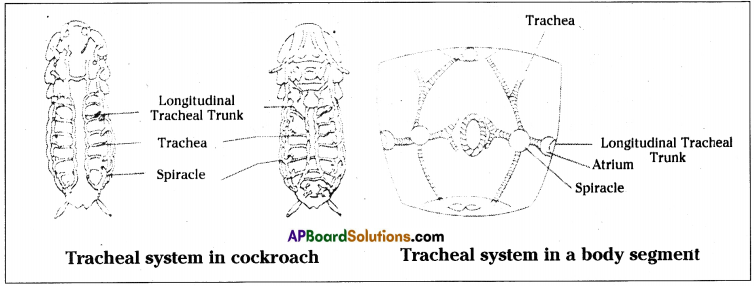
- This system consists of a series of tubes called trachea.
- These trachea open out through small apertures called spiracles on either side of the body.
- All tracheal tubes of each side join and form a longitudinal tracheal trunk.
- Trachea divide into a number of branches called tracheoles which carry air directly to the tissues.
- As the air moves in and out of the trachea, oxygen present in the air diffuses into the cells and CO2 diffuses into the air from the cells.
Question 32.
Write about the mechanism of respiration in human beings. (OR)
How does exchange of gases take place in human beings?
Answer:
- Respiration in man occurs in two stages. They are inspiration and expiration.
- During inspiration air from outside enters into the lungs by increasing the chest cavity.
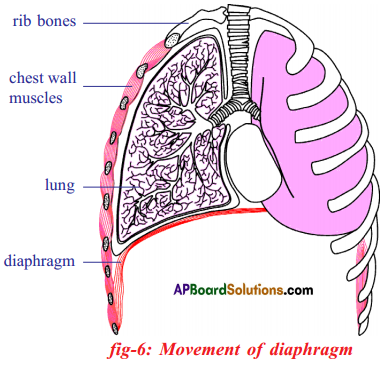
- Increase in the chest cavity is made by pulling the diaphragm down and pushing the ribs forward.
- As the air pressure in the lungs is reduced, air from outside enters the lungs through external nostrils, nasal cavities, internal nares, pharynx, epiglottis, larynx, trachea, bronchi and branchioles and finally reach the alveoli where exchange of gases takes place.
- During expiration the diaphragm and ribs come back to original positions.
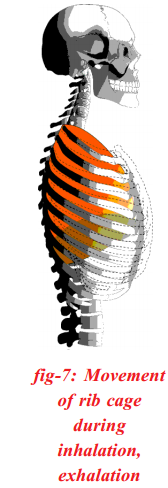
- This reduces the volume of chest cavity.
- So the volume of lungs is decreased and air under pressure comes out of the lungs.

Question 33.
Study the graph given below and analyse the reasons for accumulation of lactic acid in blood after strenuous exercise.


Answer:
- This graph shows the relation between time accumulation of lactic acid in the muscles.
- At the beginning, the amount of lactic acid in the blood is very less.
- Gradually it is increased by vigorous exercise.
- Within 15 minutes it goes to maximum level which causes muscle pain.
- Then the lactic acid is removed from muscles in an hour.
- Muscles produce energy by anaerobic respiration.
C6H12O6 → lactic acid + CO2 + energy
- In the vigorous exercise, muscle work rapidly and produce more lactic acid.
- That’s why lactic acid concentration is increased in muscle after strenuous exercise.
Question 34.
Observe the above graph of lactic acid accumulation in the muscles of an athlete and answer the following questions.
a) What was the concentration of lactic acid in the blood to start with?
Answer:
It is 20 mg/km3.
b) What was the greatest concentration reached during the experiment?
Answer:
101 mg/cm3.
c) If the trend between points C and D were to continue at the same rate, how long might it take for the original lactic acid level to be reached once again?
Answer:
55 minutes.
d) What does high level of lactic acid indicate about the condition of respiration?
Answer:
It indicates the accumulation of lactic acid in muscles through anaerobic respiration. The presence of lactic acid in the blood is the main cause of muscular pain and fatigue.

Question 35.
Describe the structure of human lungs with the help of a diagram.
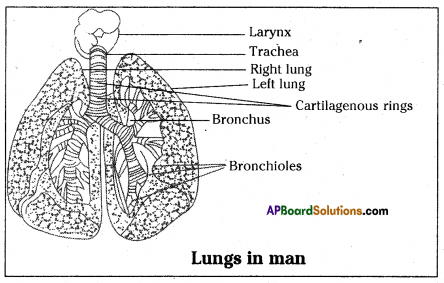
Answer:
- A pair of lungs is present in the chest cavity one on either side of the heart.
- Lungs are spongy and elastic. They are enclosed by two membranes called pleura.
- Space between the two membranes of pleura is filled with fluid. Pleura protects the lungs from injury.
- Right lung is larger than the left lung.
- Right lung is made of three lobes while the left lung has only two lobes.
- Lung has several thousands of alveoli which are supplied with blood capillaries.
- Pulmonary artery brings deoxygenated blood from heart to lungs.
- After entering the lung, this artery divides into several arterioles and capillaries and supplies deoxygenated blood to alveoli.
- Gas exchange occurs in the alveoli.
- Oxygenated blood is carried from the lung to heart by the pulmonary vein.
Project work
Question 1.
Observe and analyse the questions in the table given below.
|
Newly borned |
(Children) |
(Children) |
Children |
Youth/Adults |
Athletics |
|
(0-3 months) |
(3-6 months) |
(6-12 months) |
(1-10 years) |
|
|
| Heart beat |
100 -150 |
90-120 |
80 -120 |
70-130 |
60-100 |
40-60 |
A) In which age group rate of heart beat is more?
B) In which age group rate of heart beat is less?
C) Why heart beat in Athletics is less?
D) What are reasons for more rate of heart beats differences between the newly born and children?
Answer:
A) In newly borned babies which are in 0 – 3 months of age group rate of heart beat is more i.e., 100 to 150 times.
B) In athletics the rate of heart beat is less i.e., 40 – 60 times / minute.
C) The heart of athlete pump more blood per beat due to increased cardio-vascular fitness in the structure of the heart. The muscles in the heart wall thicken and the heart pumps more blood with each beat.
D)
- Mothers who have special medical conditions such as thyroid diseases or diabetes may give birth to new borns who are temporarily tachscardic from altered hormone and glucose levels. Tachycardia is a medical term for a very rapid heart beat.
- Some infants are born with accessory electrical tissue in the heart causes epi¬sodes of rapid heart rate.
- In wolf – parkinson syndrome – white syndrome there are extra cells and an ac-cessory path way, causing additional heart beats.

Question 2.
Observe the table given below and analyse the questions.
| Name of the animal |
Weight of the body |
Weight of the heart |
No. of beats/min |
| Blue whale |
1,30,000 kg |
750 kg |
7 |
| Elephant |
3000 kg |
12-21 kg |
46 |
| Man |
60 – 70 kg |
300 gm |
76 |
| Coaltit (Bird) |
8 gm |
0.15 gm |
1200 |
A) Why heart beat is less in animals with more weight?
B) Why heart beat is more in animals with less weight?
C) What is the relationship between weight of the body and rate of heart beat?
D) Why the weight of heart is less than body weight?
Answer:
A) The animals with more weight usually have weighted hearts. In one heart beat the large-sized hearts sends high amounts of blood to circulatory system. It takes time for the fulfilment of heart. Hence heart beat is less in animals with more body weight.
B) Usually the heart is very small in less weight animals. When the animal shrinks or contracts , its heart actually decrease the volume of blood proportionately. It can compensate for the reduced volume by increasing the rate at which it can supply blood to all body parts.
C) As the weight of the body of the animal increases the rate of heart beat per minute decreases. And also as the weight of the body decrease the rate of heart beat increases.
D) Usually the body of an organism is made by number of organs which makes the body functional. As all the body parts constitute the whole organism, the heart one of the organ is usually has less weight than body weight of an animal.

![]()
![]()
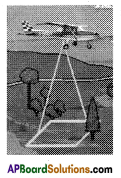
![]()
![]()

![]()
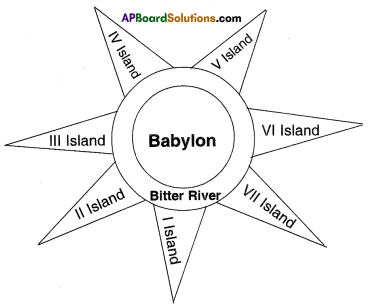 The Babylonian clay tablet was dated from the Persian period. It was flat and round. The inner circle had all the places they knew about. The city of Babylon was shown in the middle. Beyond the inner circle was ‘Bitter river, or ‘Salt water ocean’ in which were seven triangular islands.
The Babylonian clay tablet was dated from the Persian period. It was flat and round. The inner circle had all the places they knew about. The city of Babylon was shown in the middle. Beyond the inner circle was ‘Bitter river, or ‘Salt water ocean’ in which were seven triangular islands.![]()

![]()
![]()
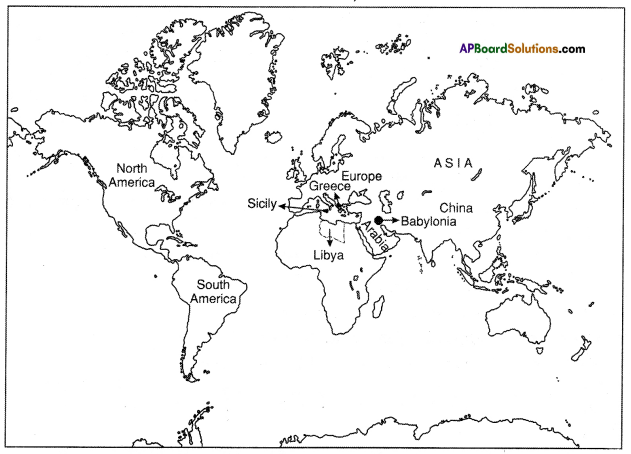
![]()

![]() This indicates
This indicates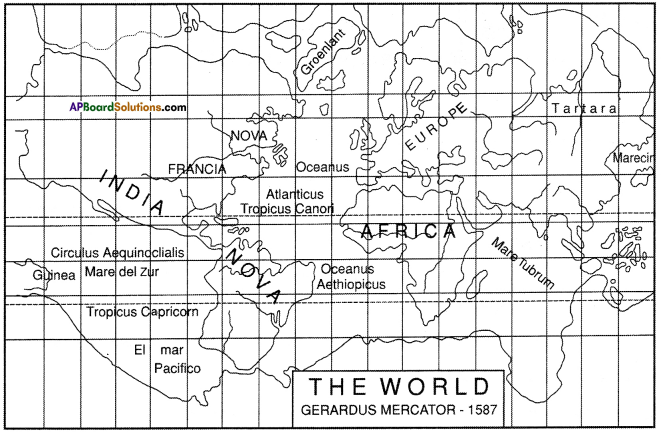
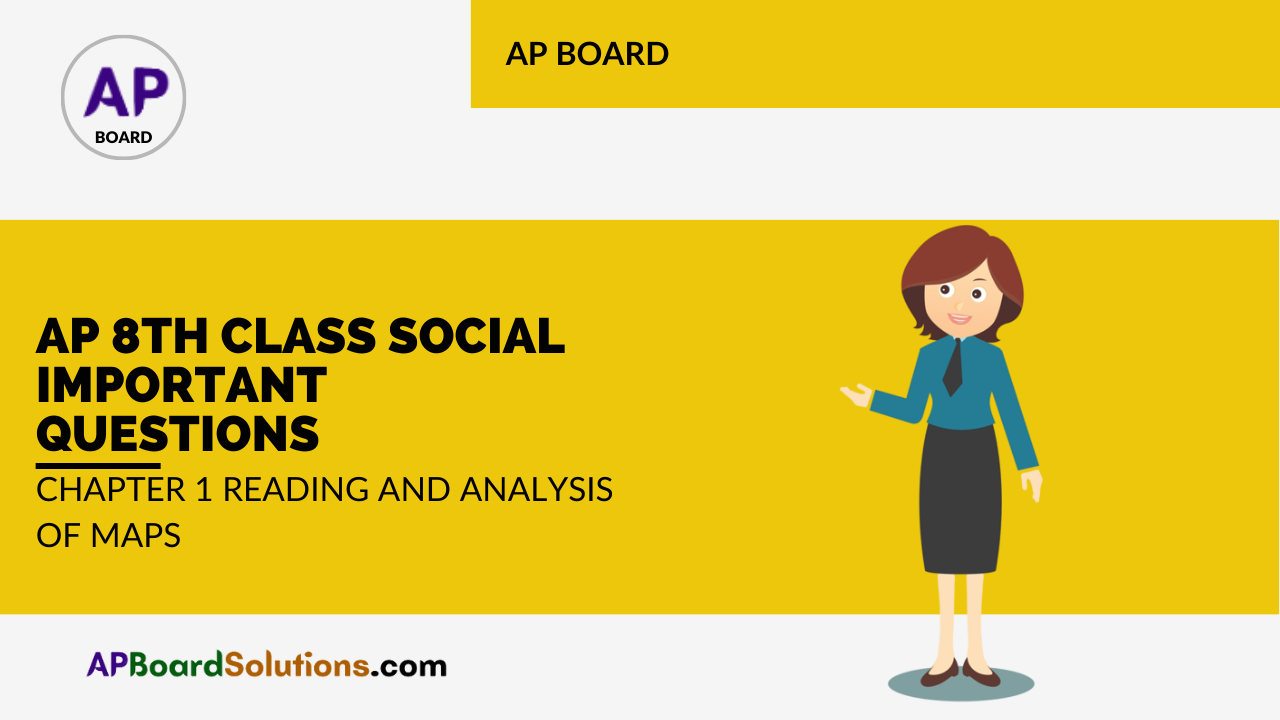


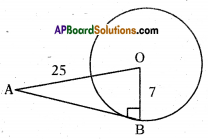


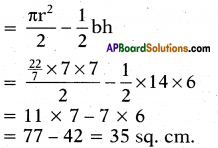

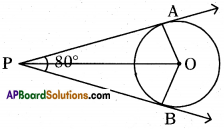
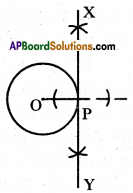


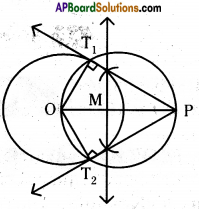

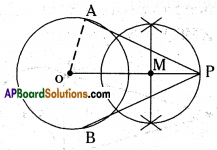



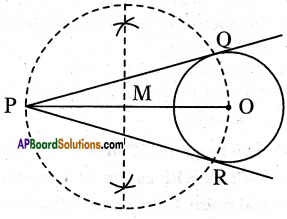





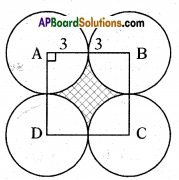




 (a) Which gas turns lime water milky in this experiment?
(a) Which gas turns lime water milky in this experiment? A) To which biosystem is this picture related?
A) To which biosystem is this picture related?
 a) What is the aim of this experiment?
a) What is the aim of this experiment? a) What do you prove by conducting this experiment?
a) What do you prove by conducting this experiment?
 i) Which process do we know with the help of this experiment?
i) Which process do we know with the help of this experiment?


 Graph showing effects of vigorous excercise on the concentration of lactic acid in blood.
Graph showing effects of vigorous excercise on the concentration of lactic acid in blood.




 Oxidation of glucose molecule occurs in the mitochondria, ot cell. This is known as cellular respiration. The energy produced during cellular respiration stored in the form of ATP molecule. Energy producing cellular respiration occurs in mitochondria hence we call it cell of power or power house of the ceil.
Oxidation of glucose molecule occurs in the mitochondria, ot cell. This is known as cellular respiration. The energy produced during cellular respiration stored in the form of ATP molecule. Energy producing cellular respiration occurs in mitochondria hence we call it cell of power or power house of the ceil.













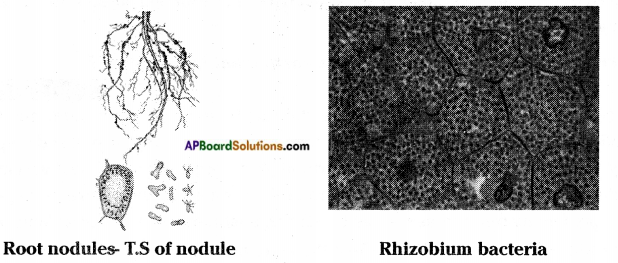

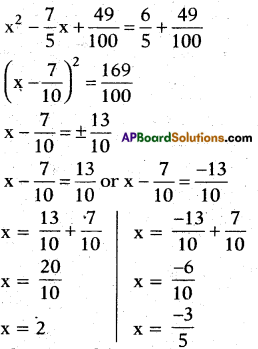
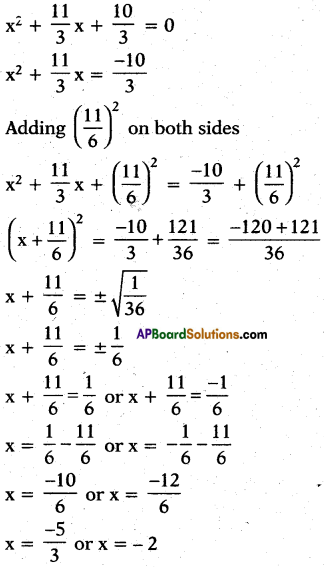
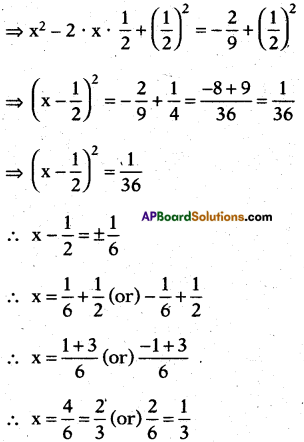
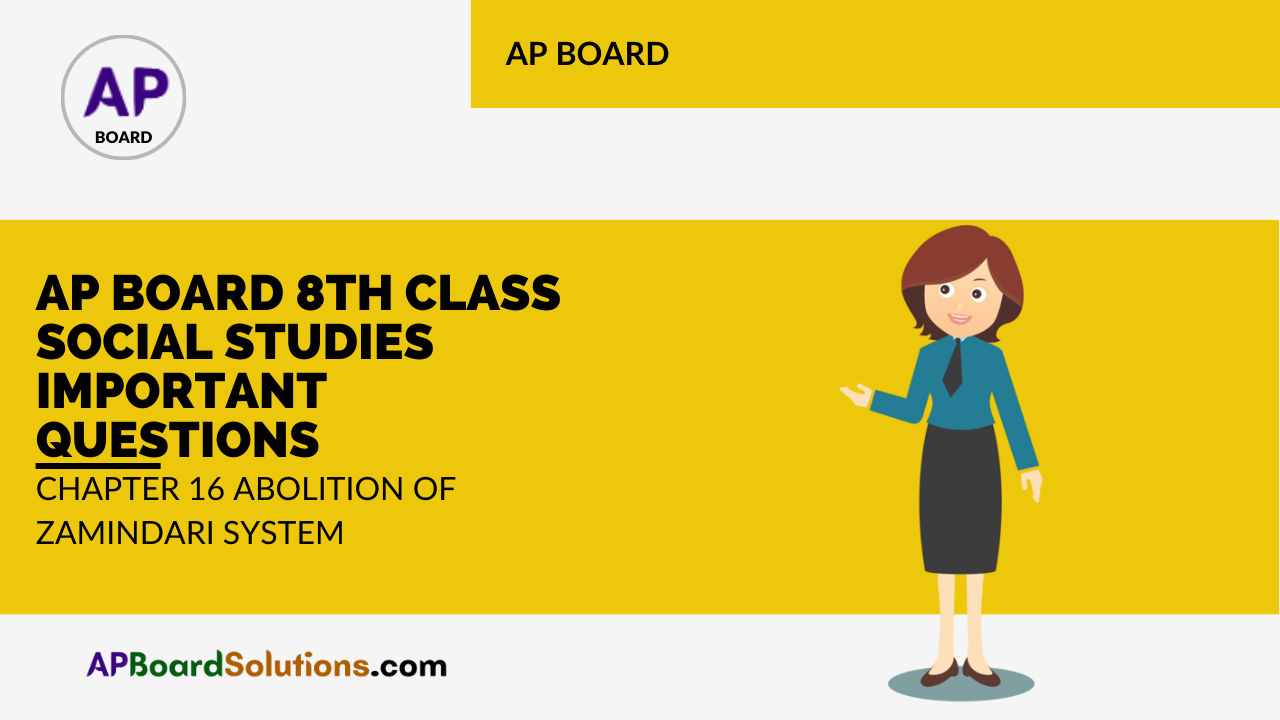
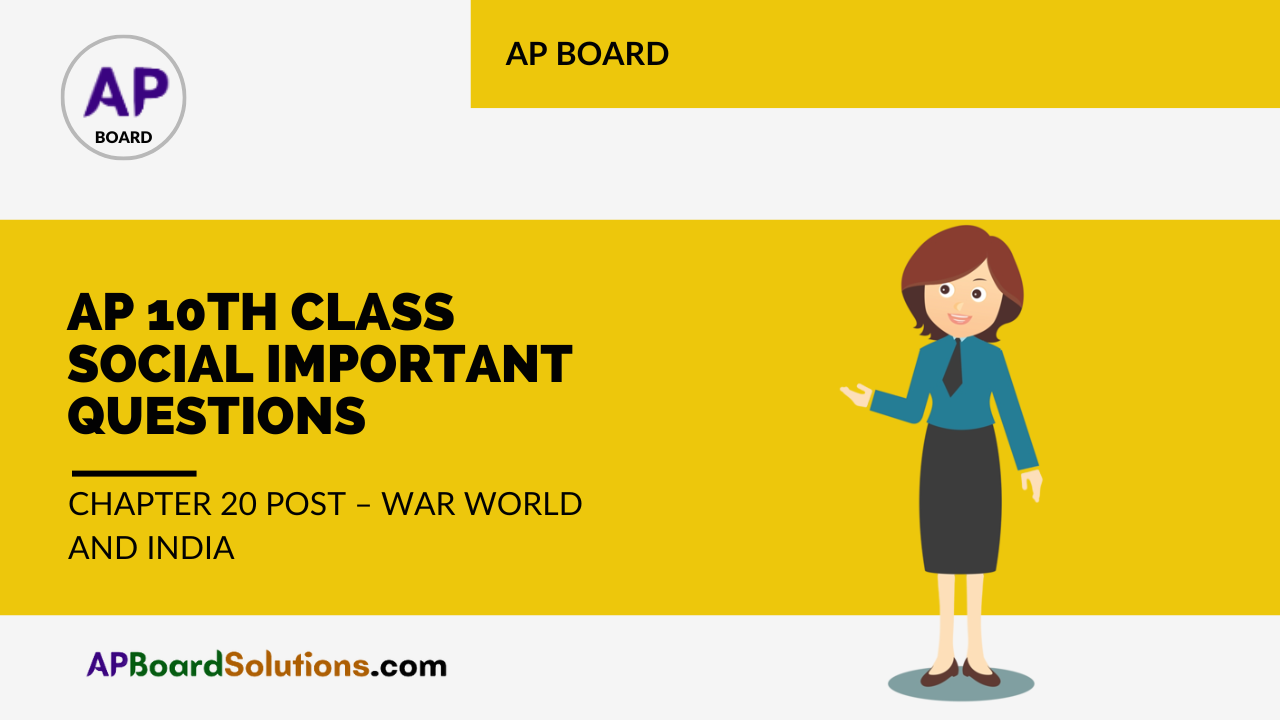
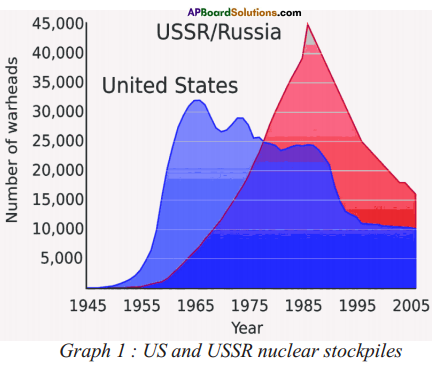 a) During 1955-2005, which country had the highest number of warheads?
a) During 1955-2005, which country had the highest number of warheads?
 A) Write any two countries which are sharing boundary with India on the North-eastern side.
A) Write any two countries which are sharing boundary with India on the North-eastern side. 1. Which country had spent more on Military Expenditure in its GDP?
1. Which country had spent more on Military Expenditure in its GDP?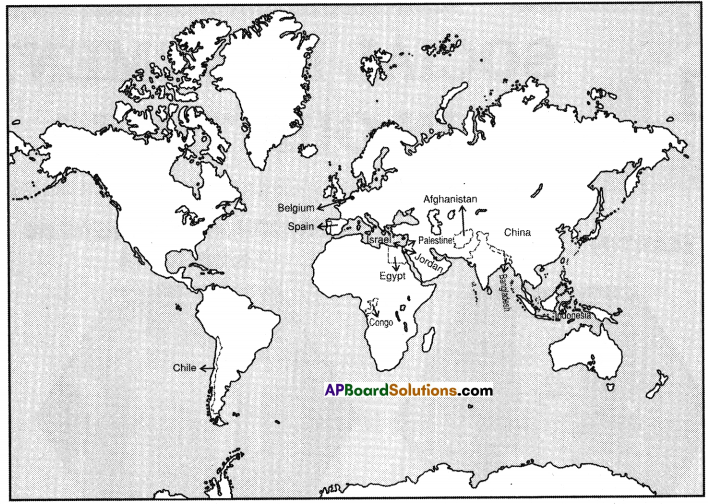
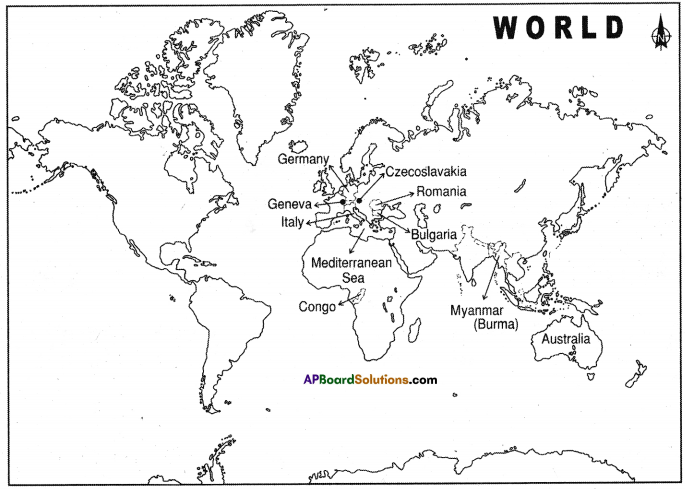
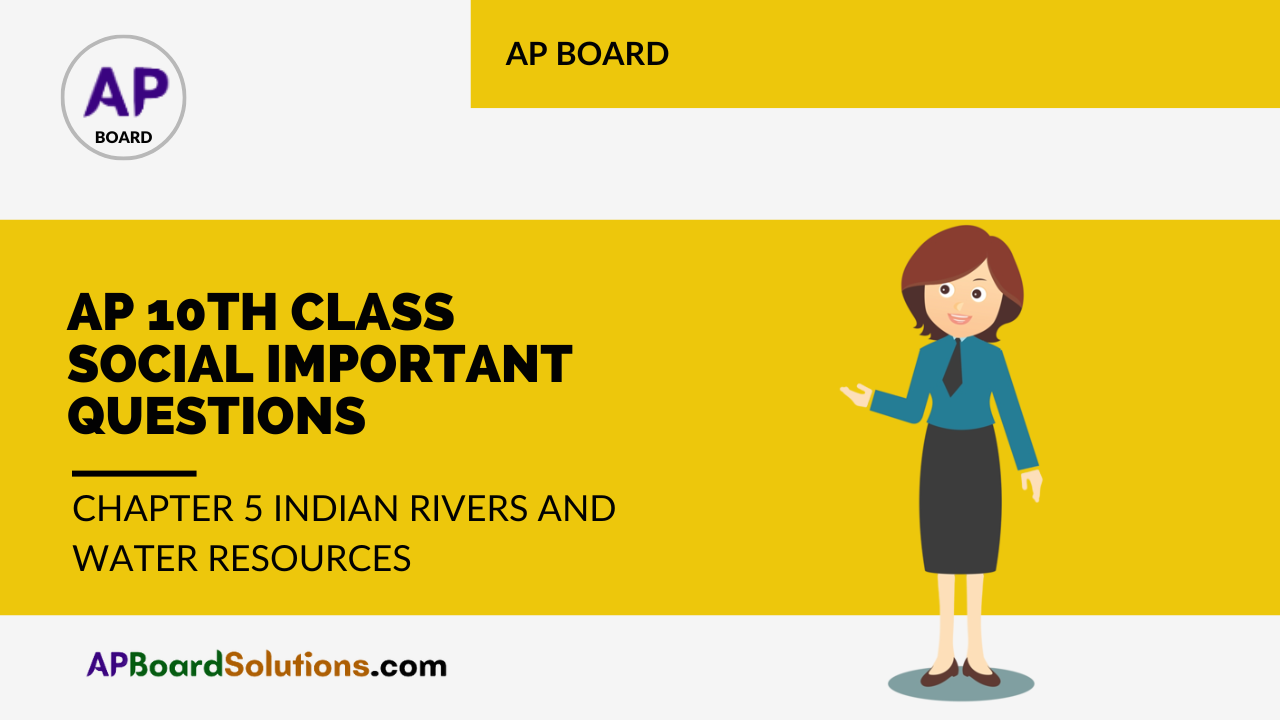

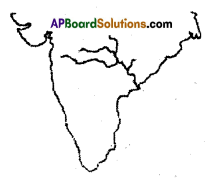
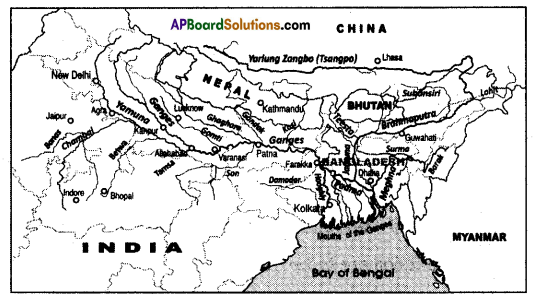 a) What is the River Ganga called in Bangladesh?
a) What is the River Ganga called in Bangladesh?



 a) Mention any two tributaries of river Ganga.
a) Mention any two tributaries of river Ganga.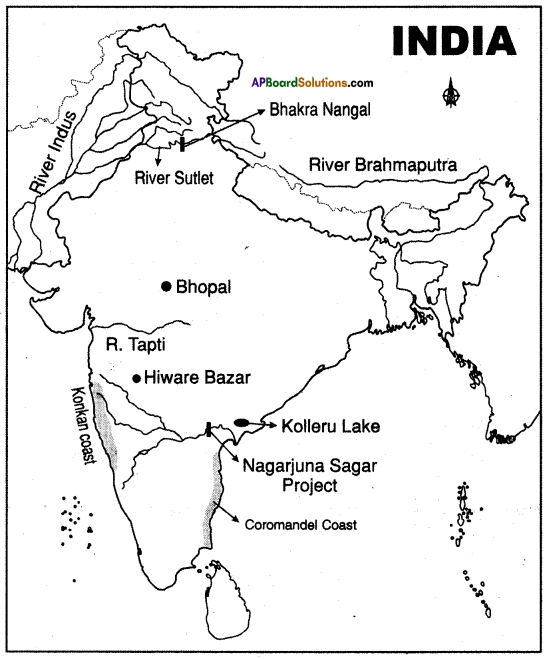

 symbol on the plastic water bottle purchased by him. What does this symbol indicate? and animals.
symbol on the plastic water bottle purchased by him. What does this symbol indicate? and animals. A) Which water resource is using more for agriculture?
A) Which water resource is using more for agriculture?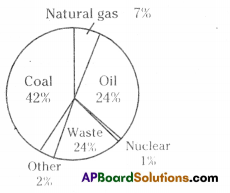 i) Identify the fossil fuels from the above diagram.
i) Identify the fossil fuels from the above diagram.
 Name any one country that shared land boundary with India and not under the control of Japan.
Name any one country that shared land boundary with India and not under the control of Japan.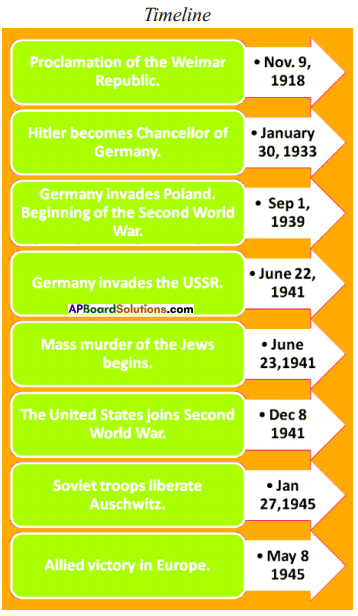
 Question 3.
Question 3.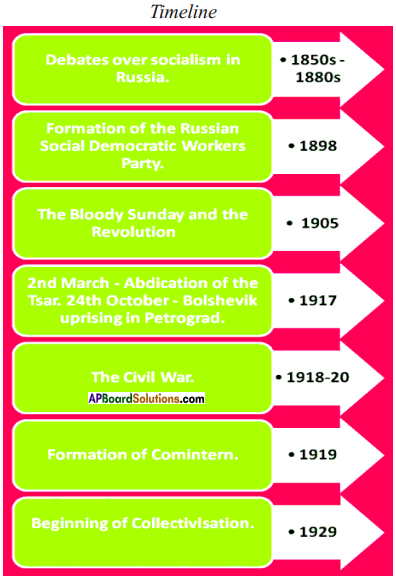

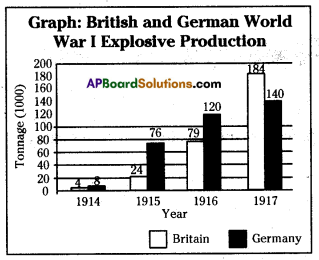 Answer:
Answer:

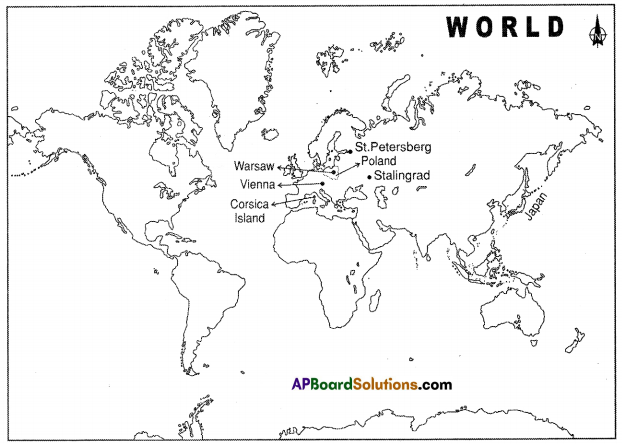

 Write a brief note on the inequality in India based on the graph.
Write a brief note on the inequality in India based on the graph.